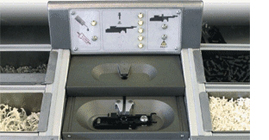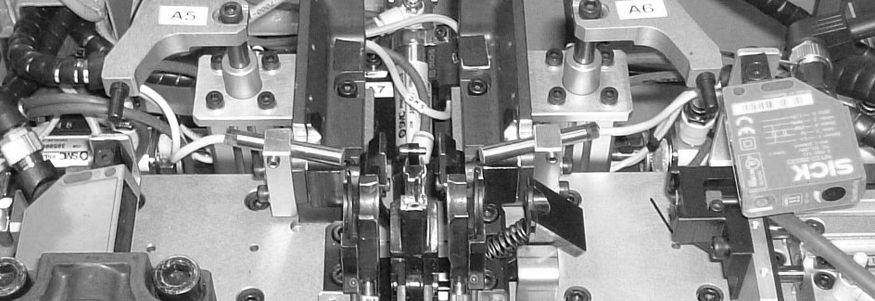Case Study - Seat Belt Assembly Machine
Before the machine was commissioned and commercially installed, Autoliv quality and production specialists observed Bayly’s in-house testing and trialling of the workstations. The business issues for Autoliv involved two options: import the completed assemblies in Australia or to set-up and manufacture locally. So factors like cost, quality and reliability were key considerations that Bayly had to incorporate into the project parameters.
Mechanical issues came with the project brief. It was essential that the new assembly cell was totally production-proofed before integration into the production line. On the people side of the project, the OH&S specifications included the need for a workstation that would be user-friendly to operators who had been assigned to “Light Duties”. This final requirement called for the Bayly team to research ergonomic issues like the reach factor, the full range of movement for repetitive tasks and the removal of any body twisting.
 Innovation
InnovationStorage areas where machine operators position springs, catches, pines and latches were carefully designed to ensure that all parts were stored in appropriate volumes, within easy and logical reach, and driven by gravity-feed delivery and dispatching systems.
Other design innovations included; the creation of a display panel with LED indicators and additional sensors and display panels to make sure that part detection data would be fed back to the operator, thus ensuring their safety and helping them to assemble the devices correctly. At this point in the design process the assembly was to be finalized by two moving arms that performed a pressing operation. Again OH&S was enhanced through the installation of a light curtain and protective shielding.
The Bayly approach to this project included full training of potential operators before the machine was finally set-up thus easing any transition problems. Our Bayly team got a lot of satisfaction out of this advanced training activity because it showed how delighted the operators were with the ease of use and comfort of their new workstations. Bayly knows from past.

